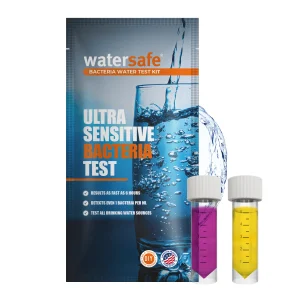Instructions For Use
Download IFU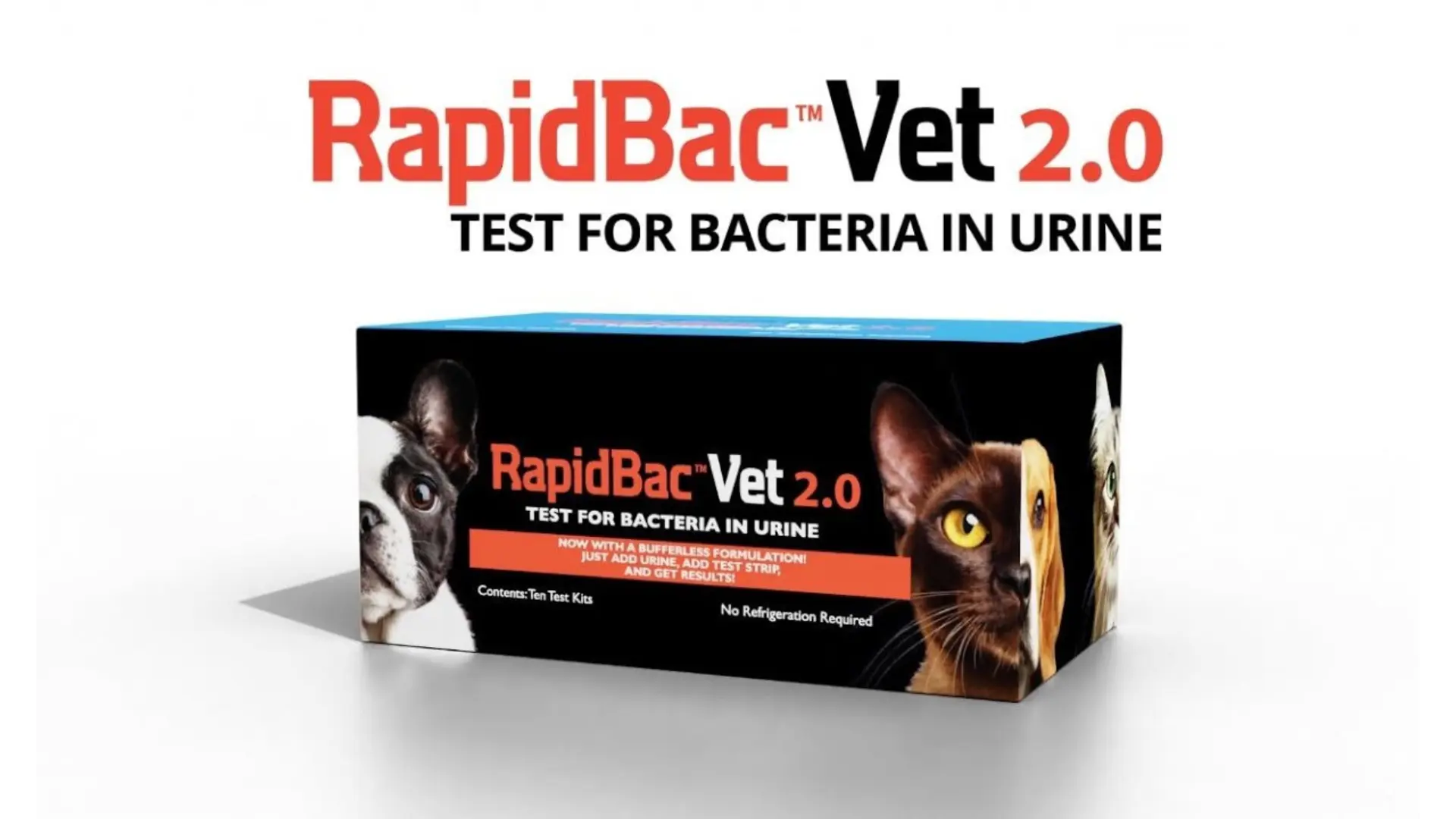
About Product
Read all instructions before use
RapidBac™ Vet has been validated in clinical studies for both dogs and cats, with results comparable to gold-standard urine culture.
Kit Components
- Test strip
- Test vial
- Disposable pipette
- Desiccant (to be discarded)
Precautions and Warnings
- Do not open foil pouch prior to use
- Observe applicable biohazard safety procedures when handling test strips and samples
- Do not reuse any components of the test kit
Storage
- Store at room temperature (10-30°C/50-86°F)
- Do not use after expiration date on packaging
Urine Collection
- Cystocentesis
- Catheter
- Clean catch
Step By Step Instructions

Step # 1
Using the disposable pipette, add five (5) drops of sample into the test vial.
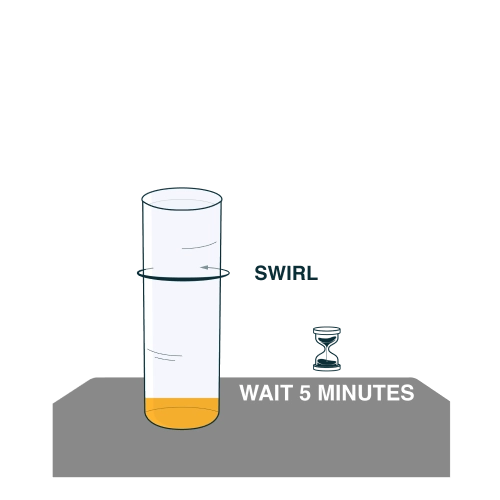
Step # 2
Make sure all liquid is at the bottom of the test
vial by swirling it and tapping the test vial gently on a flat surface. Wait 5 minutes.
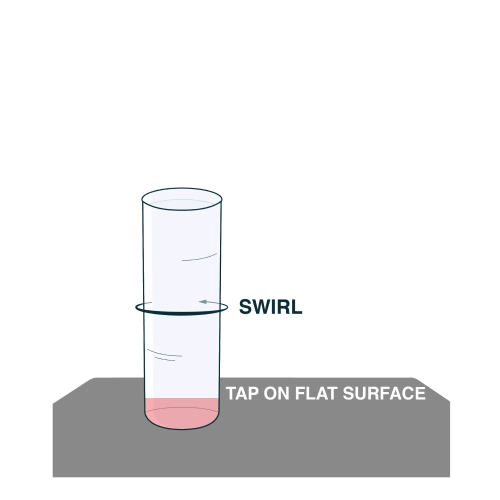
Step # 3
Swirl test vial gently again. This step is essential for proper detection.
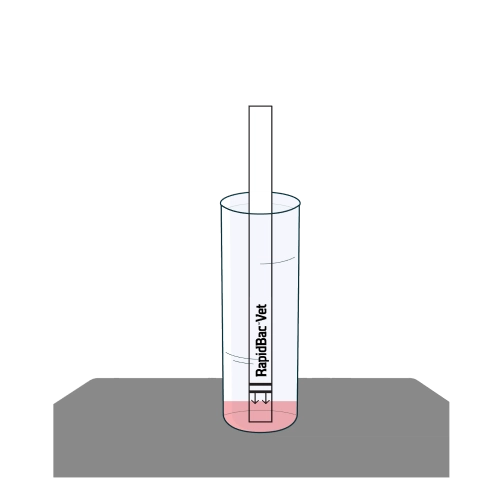
Step # 4
Place test strip into test vial with arrows pointing down. Wait 10 minutes. Do not disturb the test strip or test vial during this time.
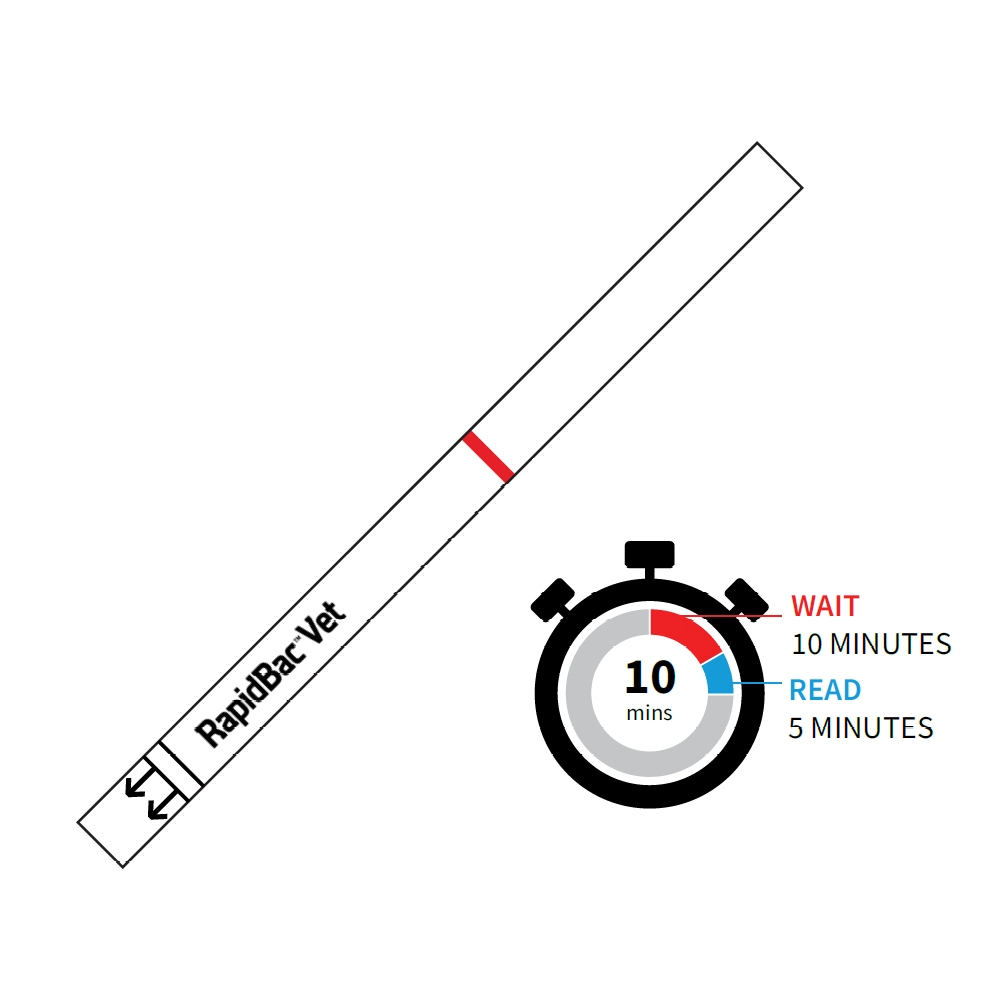
Step # 5
After 10 minutes, remove the test strip from the test vial and immediately interpret the results. Do not read the results after 15 minutes.

Step # 1
Using the disposable pipette, add five (5) drops of sample into the test vial.

Step # 2
Make sure all liquid is at the bottom of the test
vial by swirling it and tapping the test vial gently on a flat surface. Wait 5 minutes.

Step # 3
Swirl test vial gently again. This step is essential for proper detection.

Step # 4
Place test strip into test vial with arrows pointing down. Wait 10 minutes. Do not disturb the test strip or test vial during this time.

Step # 5
After 10 minutes, remove the test strip from the test vial and immediately interpret the results. Do not read the results after 15 minutes.
Interpreting the Results

Negative Result
Only control line (C) develops color; no bacteria detected.

Positive Result
If both Line 1 and Line 2 are present, a Gram-negative organism has been detected. Gram-negative bacterial species known to give this result include: E. coli, Klebsiella spp., Citrobacter spp., Enterobacter spp., and Serratia spp.
If Line 2 is present and Line 1 is absent, the detected organism may be Gram-positive or Gram-negative. Bacterial species known to give this result include: Proteus spp., Morganella spp., Providencia spp., Staphylococcus spp., Enterococcus spp., Actinomyces spp., and Actinobaculum spp.
In rare samples with high levels of Gram-negative bacteria, both Line 1 and Line 2 appear, but the control line is weak or absent – this result should be interpreted as positive Gram-negative organism detected.
Faint lines are valid results.

Invalid Result
If control line does not develop color, the result is invalid – repeat test.
In rare cases, Line 1 appears but Line 2 does not, this is an invalid result.
Do not repeat the test. Contact us for assistance.

Negative Result
Only control line (C) develops color; no bacteria detected.

Positive Result
If both Line 1 and Line 2 are present, a Gram-negative organism has been detected. Gram-negative bacterial species known to give this result include: E. coli, Klebsiella spp., Citrobacter spp., Enterobacter spp., and Serratia spp.
If Line 2 is present and Line 1 is absent, the detected organism may be Gram-positive or Gram-negative. Bacterial species known to give this result include: Proteus spp., Morganella spp., Providencia spp., Staphylococcus spp., Enterococcus spp., Actinomyces spp., and Actinobaculum spp.
In rare samples with high levels of Gram-negative bacteria, both Line 1 and Line 2 appear, but the control line is weak or absent – this result should be interpreted as positive Gram-negative organism detected.
Faint lines are valid results.

Invalid Result
If control line does not develop color, the result is invalid – repeat test.
In rare cases, Line 1 appears but Line 2 does not, this is an invalid result.
Do not repeat the test. Contact us for assistance.



